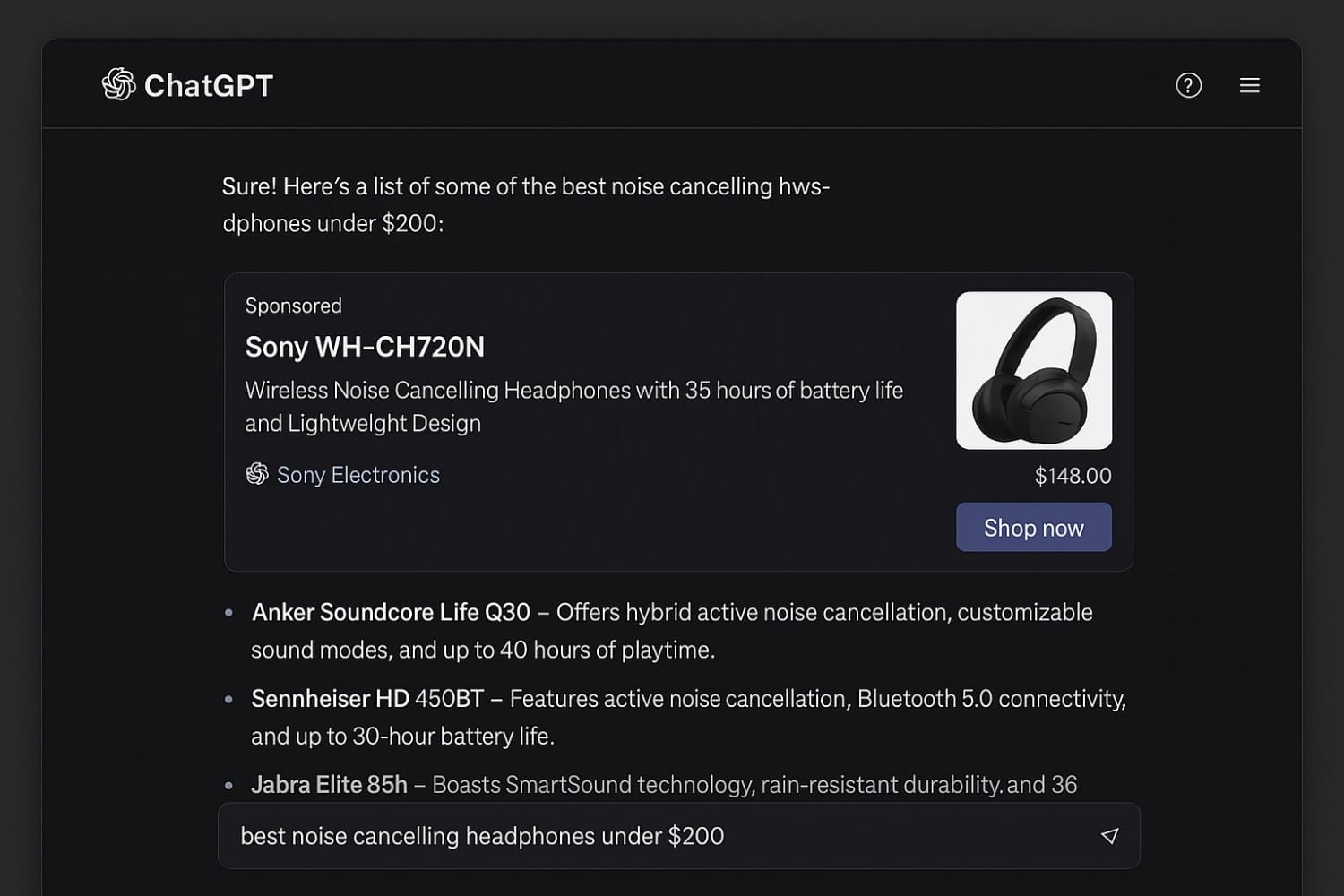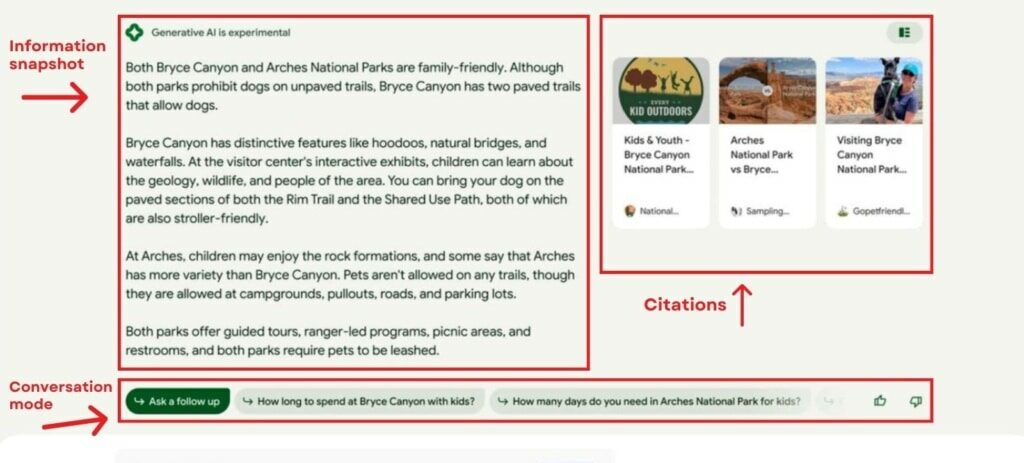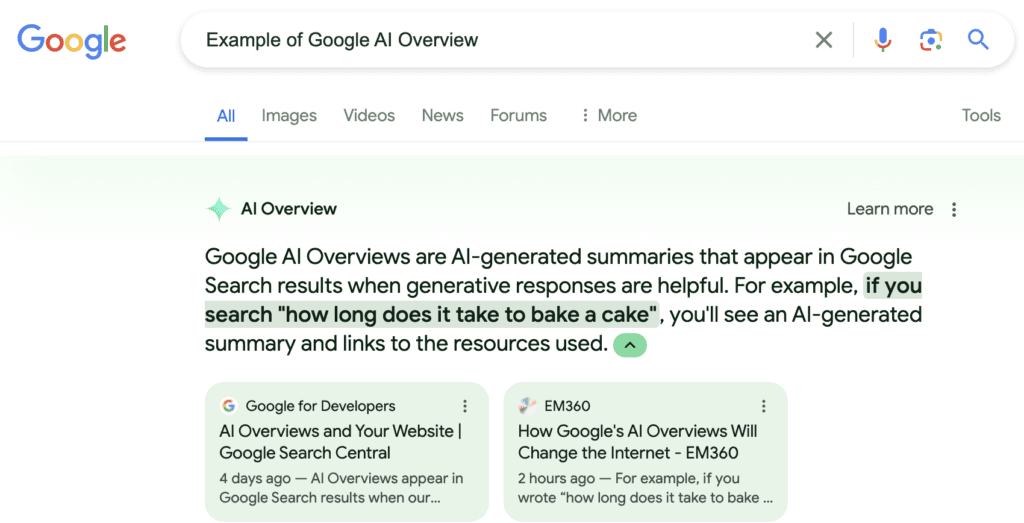ChatGPT Ads and advertising on GenAI Search Engines: what you need to know
22/05/25
6'
Advertising on generative AI-based search engines (GenAI) marks a new era in digital marketing. After two decades dominated by traditional search via Google Ads or Bing, conversational interfaces such as ChatGPT, Perplexity, and Google SGE (Search Generative Experience) are redefining usage patterns and advertising opportunities.
In 2026, OpenAI is expected to officially launch its own ad formats with ChatGPT Ads. This is a strategic shift for brands, which now need to adapt their content, product feeds and visibility strategies.
Why start focusing on advertising in GenAI search now?
The shift toward generative search is accelerating in 2025. A few key stats help highlight the scale of the trend:
- ChatGPT.com recorded around 5.2 billion monthly visits, with 601.5 million unique visitors.
- The global AI search engine market is valued at $43.63 billion in 2025 and is projected to reach $108.88 billion by 2032, with an average annual growth rate of 14 percent.
- According to a study by Botify and DemandSphere, AI-generated answers on Google occupy nearly half of the screen on average, 42 percent on desktop and 48 percent on mobile. When paired with a Featured Snippet, the two blocks can cover up to two-thirds of the visible page.
These changes make advertising investments in conversational environments even more strategic.
ChatGPT Ads: A New Advertising Network in the Making
OpenAI is planning to introduce native ad formats directly within ChatGPT. According to internal documents revealed in 2024, ChatGPT Ads will appear in the free interface, with a bold objective: generate $25 billion in ad revenue by 2029.
Several formats are currently under consideration:
- Sponsored answers seamlessly integrated into conversations
- Carousels promoting products or content based on the user’s context
- Rewarded ads, where users watch an ad in exchange for temporary premium access
OpenAI has recently strengthened its teams by recruiting several former executives from major tech firms, including Google and Meta, aiming to build an ad platform that meets industry standards.
Fidji Simo, a French executive and former CEO of Instacart and head of the Facebook app at Meta, has been appointed CEO of Applications at OpenAI. At Meta, she oversaw key products such as Facebook Live, Watch, and News Feed. Her arrival reflects OpenAI’s ambition to develop consumer-facing products like ChatGPT at the level of major tech platforms.
Kate Rouch, former Global Head of Marketing at Coinbase and ex-Meta executive, has been named OpenAI’s first Chief Marketing Officer (CMO). At Meta, she led brands such as Instagram, WhatsApp, Messenger, and Facebook. Her arrival marks a strategic milestone for OpenAI in developing its communication and advertising efforts.
Caitlin Kalinowski, formerly in charge of AR hardware at Meta, joined OpenAI to lead its robotics and consumer hardware division. Her experience includes overseeing projects like the Orion AR glasses and Meta Quest 2 VR headsets. She previously worked at Apple on the Mac Pro and MacBook Air.
Irina Kofman, a former Meta executive, has been hired to lead OpenAI’s strategic initiatives. Her expertise in managing multidisciplinary teams and scaling products is a strong asset.
In addition, OpenAI has attracted at least 44 former Google employees since early 2024, according to LinkedIn profile analysis. These hires include engineers and AI specialists, further boosting OpenAI’s product and service development.
Together, these strategic hires show OpenAI’s intent to build a competitive ad platform and create innovative AI products.

Quick overview of what a ChatGPT Ads response might look like – generated image –
Google SGE and Perplexity: Other Pioneers
Since 2023, Google has been experimenting with its Search Generative Experience, which generates answers at the top of search results using AI models. This pushes organic results further down, but Google Shopping Ads still appear in 81 percent of cases, even when the AI response is displayed.
Perplexity AI, on its end, launched an innovative format in late 2024: “sponsored follow-up questions.” After answering a query, the tool suggests additional sponsored questions directly related to the user’s intent.
These experiments show that advertising is adapting to conversational interfaces by integrating naturally into the information flow.

Above Google SGE, for synthesis and conversation.
And below Google AI Overviews, for synthesis.

How to prepare your content and campaigns for 2026
According to a SparkToro study, referral traffic from ChatGPT increased by 145 times in one year, with an estimated one percent share of global search volume, an impressive figure for a tool that only cites sources in certain cases.
To anticipate the arrival of ChatGPT Ads and capture conversational traffic more broadly, here’s a concrete roadmap:
- Structure your information
Conversational engines prioritise well-structured content. Use bullet points, comparison tables, and FAQ-style blocks to facilitate extraction. - Focus on expertise
Quote reliable sources, keep your data up to date, and highlight original insights. AI favours highly credible content. - Tag your pages properly
Schema.org tags such as FAQPage, Product, or HowTo help search engines better understand and reuse your content. - Optimise your product feeds
Prepare clear, categorised catalogues with titles, images, prices and structured descriptions. These feeds can fuel sponsored carousels or AI suggestions. - Analyse conversational queries
Start identifying common questions about your brand, sector or products using ChatGPT APIs or tools like Perplexity Labs.
Should you rethink your media strategy in 2025?
Yes, without a doubt. GenAI engines are changing both the shape of results and how users interact with them.
In the short term (2025)
Continue investing in Google Shopping, which remains a priority even within the SGE environment. Complement it with educational or guide-style content that is well-tagged and high-value.
In the medium term (2026)
Start preparing conversational campaigns on ChatGPT and Perplexity, focusing on:
- Long-tail, high-intent queries
- Conversation flows with follow-ups (e.g. product diagnosis → solution → sponsored recommendation)
- Native formats that enrich rather than interrupt the experience
Conclusion
Conversational advertising is inevitable. OpenAI is actively preparing the launch of ChatGPT Ads, while Google and Perplexity are already testing innovative formats. In this context, brands must rethink their content, visibility and media buying strategies.
Those who anticipate this transformation today will reach tomorrow’s qualified and engaged audiences, ones that are increasingly difficult to reach through traditional channels.
Your e-commerce library
Sign up for our newsletter
By submitting this form you authorize Lengow to process your data for the purpose of sending you Lengow newsletters . You have the right to access, rectify and delete this data, to oppose its processing, to limit its use, to render it portable and to define the guidelines relating to its fate in the event of death. You can exercise these rights at any time by writing to dpo@lengow.com

Trending Posts
Marketing channels
ChatGPT Ads and advertising on GenAI Search Engines: what you need to know
Advertising on generative AI-based search engines (GenAI) marks a new era in digital marketing. After two decades dominated by traditional…
22/05/25
6'
Marketing channels
Reddit and Social Commerce: When Users Take Back Control
Before buying anything, we compare. We hesitate. And more and more often, we end up typing the product name followed…
30/06/25
8'
Marketing channels
How to Sell on TikTok in 2025: The Ultimate Guide to Success
To sell or not to sell on TikTok? That remains a question many brands ask themselves. But here’s what you…
03/02/25
7'
E-commerce Trends
E-Commerce 2025: The New Rules of Digital Retail
What’s going on in e-commerce? A lot. If 2024 was the year brands got comfortable with marketplaces, AI tools, and…
11/07/25
8'
Marketing channels
Omnichannel Strategy: The Best Examples of Successful Brands
Consumers interact with brands through multiple channels, including online, in-store, and mobile apps. More than 90% of consumers expect a…
04/04/25
5'




